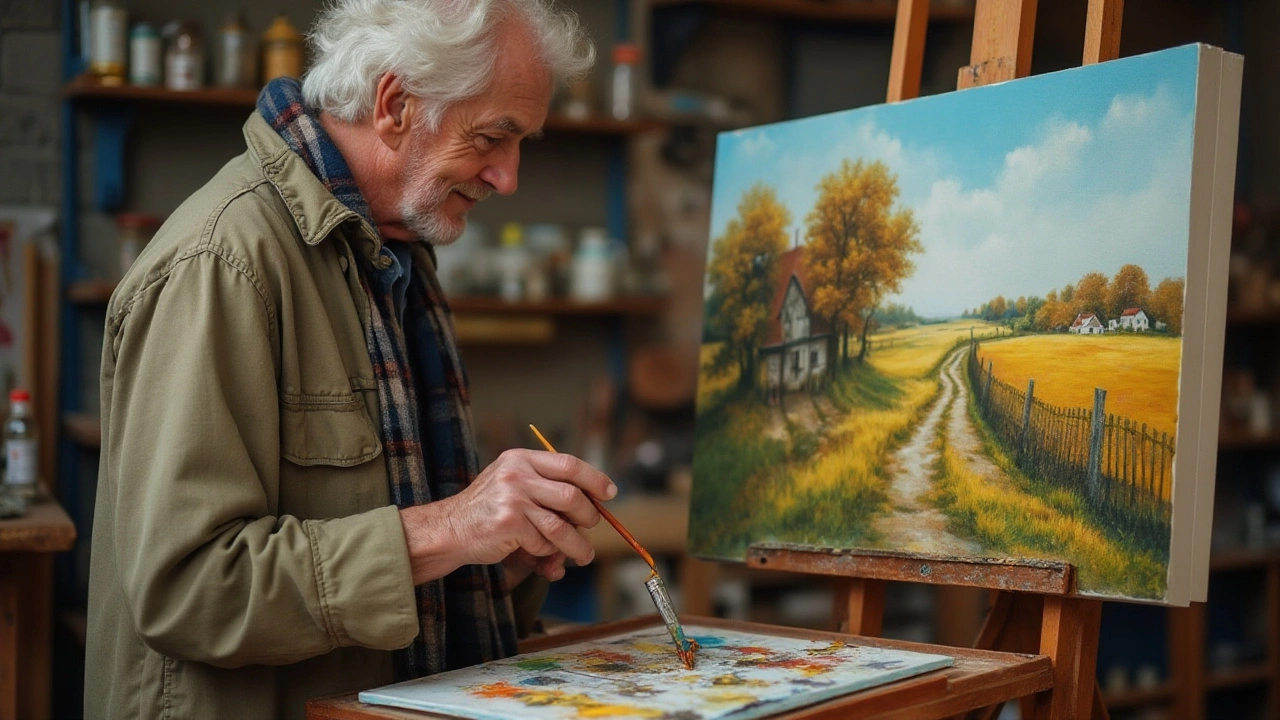Paint Drying Time – What You Need to Know
Ever wondered why your paint feels wet one day and crumbly the next? The answer lies in paint drying time. Knowing how long each paint type stays wet helps you plan your work, avoid smudges, and finish projects faster.
Factors That Influence Paint Drying Time
First off, the kind of paint matters. Oil paints can take days or even weeks to fully cure, while acrylics usually dry to the touch in 15‑30 minutes. Watercolors dry almost instantly on paper, but the paper’s absorbency still plays a role.
Temperature and humidity are big players too. Warm, dry rooms speed up drying, whereas cool, humid spaces slow it down. Even the thickness of your layer matters – a thin glaze dries quicker than a thick impasto.
What you mix into the paint counts as well. Adding mediums like linseed oil for oils or retarders for acrylics changes the drying schedule. Keep an eye on any additives you use; they’re often the reason a painting takes longer than expected.
Tips to Speed Up Drying
If you need your paint to dry faster, start by improving airflow. A simple fan can cut drying time in half for acrylics and oils. Just make sure the airflow isn’t too strong, or you’ll create dust spots.
Raise the room temperature a few degrees. A space around 70°F (21°C) with low humidity is ideal for most paints. Using a dehumidifier in damp climates can also help, especially for oil paints that are prone to staying tacky.
Thin your layers. Instead of a thick brushstroke, apply several thin coats and let each dry before adding the next. This trick works wonders for both oils and acrylics and reduces the risk of cracking later.
Consider using quick‑drying mediums. For oils, a small amount of alkyd medium speeds up the surface dry time without sacrificing the buttery feel. For acrylics, a fast‑dry additive does the same job.
Finally, test the dryness before moving the piece. Lightly touch the edge with a clean fingertip; if it feels tacky, give it more time. For oils, a “scratch test” with a fingernail on an inconspicuous spot tells you if the surface is fully cured.
Understanding paint drying time lets you work smarter, not harder. By watching the temperature, humidity, layer thickness, and paint type, you can predict when a piece is ready to handle, frame, or move on to the next layer. Use these tips, and you’ll keep your studio running smoothly without the dreaded surprise of a wet paint disaster.

31 Oct 2024
Linseed oil is a staple in the art of oil painting for its ability to alter paint texture and drying time. This article delves into why artists choose linseed oil as a medium, exploring its benefits and the impact on both color vibrancy and longevity. From its historical usage to practical tips on application, discover how linseed oil can transform your painting experience. Whether you're a seasoned artist or a beginner, understanding the relationship between linseed oil and oil paints can enhance your technique and results.
Continue reading...
